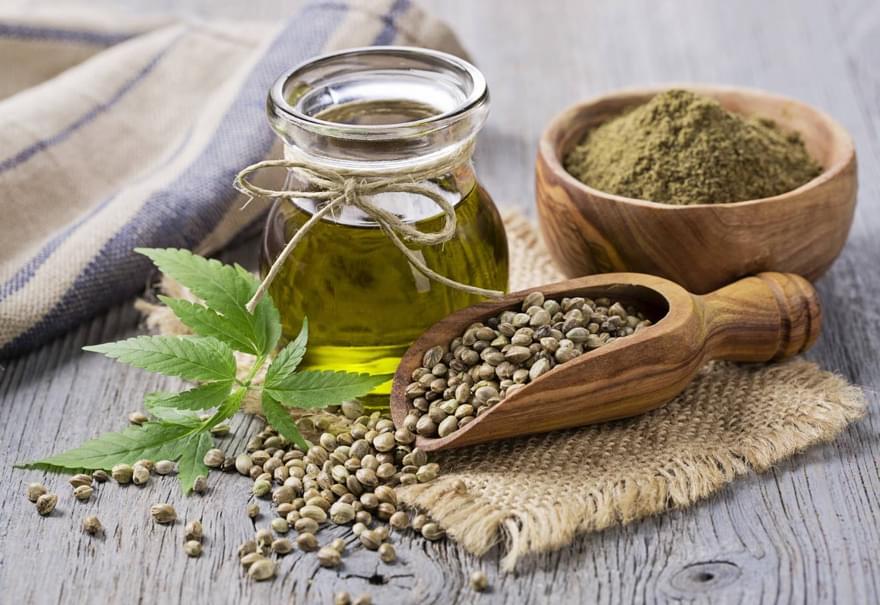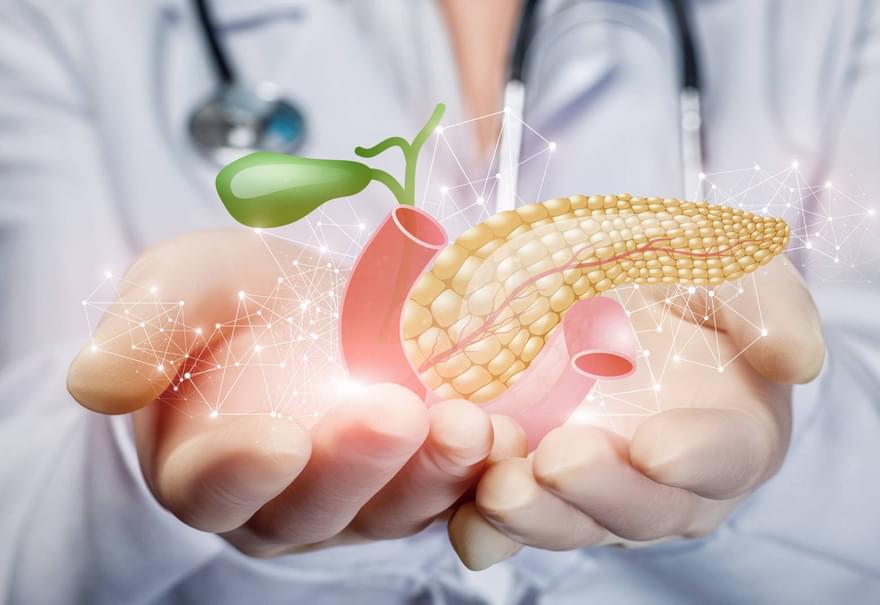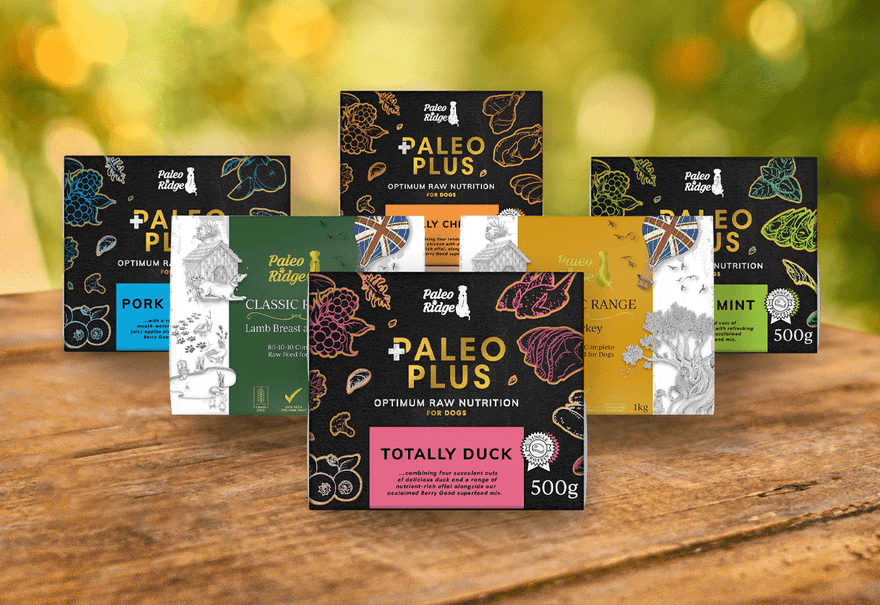
Hemp Seed - A Powerhouse of Health for Your Dog
Guest Blog: Anna Webb
Hemp seed and hemp seed oil are a powerhouse of health that's good for the planet, biodiversity and your dog. Find out why here.
There are several important stages to digestion, from food entering the mouth, to waste being expelled as faeces. A highly digestible food is one which your dog can absorb more nutrients from and in turn this produces less waste. The functions of the digestive system can be divided into 4 main categories: digestion, absorption of nutrients, motility: moving through the digestive tract, and elimination of faeces.

Digestion of food starts as soon as your dog takes a bite. Saliva contains enzymes that begin the process of breaking food down so that nutrients can be extracted. Food then passes down the oesophagus, into the stomach, then into the small and large intestine, last stop is the rectum to be expelled as waste. Digestibility is an extremely important factor in how food is digested and how nutrients can be extracted.
Ingestion: Food enters your dog's mouth. Saliva containing important enzymes start the break down process. Food is then swallowed. As raw is 100% natural, the enzymes in saliva are much better equipped to break down natural food sources. Processed food is much harder to break down.
Digestion Starts: After food is swallowed it passes quickly down the oesophagus into the stomach. Here it is mixed with strong stomach acids, this helps break food down further. Your dog's naturally acidic stomach is totally geared up for meat, offal and bones: all the components of a natural raw diet.
Absorption of nutrients: Once food has been broken down enough in the stomach, it passes into the small intestine. This is where most of the nutrients are absorbed through the small intestinal wall, into the blood stream to be used by the body. Your dogs body is able to extract essential nutrients from a natural raw diet with ease. These nutrients are highly digestible and have high bioavailability. A grain-heavy, additive-filled processed diet puts their whole system under pressure. The organs are overworked trying to digest the indigestible. Processed food with lower digestibility is not absorbed into the body. Instead, it is pushed through to the large intestine as waste.
Movement through the digestive tract: Most of the bacteria in the gut microbiome are in the large intestine, where they help digest food your dog can’t break down alone. After most of the useful nutrients have been absorbed into the body, everything remaining is pushed into the large intestine to be broken down and further digested. Any residual moisture is also removed here. What is left becomes waste. The amount of indigestible matter from a raw fed dog, is very different to that of a processed fed dog.
Elimination of faeces: Waste from the large intestine is stored in the rectum until the dog needs to pass stools. Waste is then expelled. Raw fed dogs produce small pellet like stools, once or twice a day (sometimes they skip a day), that degrade very quickly. Processed fed dogs produce much more waste as most of what they eat is indigestible. This can be as much as 3-5 larger and softer stools per day. These stools do not degrade as they are completely unnatural.
Dogs have a higher metabolism than people. Their normal body temperatures are higher, they mature faster, breathe faster and pump blood faster. Puppies have endless energy! Unfortunately, this high metabolism comes with a shorter life span. Sadly, one dog year equals around seven human years. Life span does depends on health and size. Large breeds generally do not live as long as small breeds.
Raw food is metabolised and used by the body in a much more efficient way. Protein is made of building blocks called amino acids. These are important not just for energy, but to gather tissues in your dog. They also make enzymes that fire important metabolic processes. Your dog's metabolism is the body's complex process of converting food into usable energy.
This process involves communication with the following:
When sleeping or resting, your dog's body needs energy to power autonomic nervous system functions like:
The number of calories needed to power all these autonomic nervous system functions are called the basal metabolic rate, or resting energy requirement.
When you add in physical activity, the body's calorific requirement goes up. Your
dog's metabolism works the same way. It is the metabolism that determines how much your dog needs to eat. There are many factors that contribute: age, activity levels, health conditions and genetics. Two dogs of the same breed, age and weight, will not necessarily eat the same amounts. It is important to remember that feeding guides are just a guide. The correct amount to feed, will see your adult dog neither gain or lose weight. Feeding amounts can go up and down due to various factors. Puppies need considerably more food due to rapid growth rates.
Metabolism refers to all processes in the body that break down and convert ingested substances to provide the energy and nutrients needed to sustain life. Foods, liquids, and medicines all generally undergo metabolic processes within the body. Many foods are complex materials that need to be broken down into simpler substances, which in turn become “building blocks” for the body to use as needed. For example, protein is broken down into amino acids, which are used in several metabolic reactions. Enzymes made by the body are needed for many metabolic processes to occur. Whenever the function of an enzyme is affected, a metabolic disorder can develop. Metabolic disorders are important because they affect energy production or damage tissues. They may be genetic (inherited) or acquired. Acquired metabolic disorders are more common and significant.
A number of health conditions can affect the metabolism:
Thyroid - The thyroid gland keeps the metabolism running smoothly, by regulating the release of hormones into the bloodstream.
Hyperthyroidism is the result of your dog's thyroid gland producing too much thyroid hormone. This can increase your dog's metabolic rate to dangerous levels. This condition is rare in dogs, but is often serious. It is treatable but very much depends on the underlying cause. Symptoms include, increased appetite, rapid weight loss, excessive excitability. If you have concerns, seek veterinary advice without delay.
Hypothyroidism is the result of your dog's thyroid gland failing to produce enough thyroid hormone. This slows your dog's metabolic rate. Symptoms include tiredness, changes in skin and coat, weight gain and reduced appetite . Some dogs have trouble keeping warm. The symptoms of hypothyroidism can vary greatly from dog to dog, but are all mostly related to your dog’s slowing metabolism. Seek veterinary advice without delay if you have concerns.
Cushing’s disease in dogs, causes over-active adrenal glands to excrete too much cortisol. The adrenal glands are responsible for excreting hormones, they are needed for various processes within the body. Too much cortisol can suppress the immune system and impact metabolism. This increases the chances of infections and other diseases. Cushing’s disease is more common in older dogs.
As your dog gets older, they tend to gain fat and lose muscle. A dog's metabolism slows with age. This means the body burns fewer calories and needs less food to function. Senior dogs tend to be less energetic, so they burn even fewer calories. A slower metabolism is one of the main reasons why older dogs tend to become overweight. Less exercise, can contribute to muscle loss. Muscles are the main driver of the metabolism. Strong, healthy muscles are necessary to keep up a healthy metabolic rate. If your dog isn't burning as many calories, they can pack on the pounds.
Genetics can plays a role in your dog's metabolic rate. Dogs that are predisposed to slower metabolic rates will have a harder time burning off the calories they intake, which means excessive weight gain. This can contribute to other health concerns. Your dog's metabolic rate can simply be passed down from your dog's parent's, similar to how genetic diseases can. Genetics also are a factor when combined with your dog's breed.
One of the many beneficial aspects of feeding a raw diet, is considerably less stools. As raw is 100% natural, the body is equipped to digest most of it. This means the body is able to break down what is eaten into less than 10% waste, considerably less than processed fed dogs. The body is unable to breakdown processed food, what is eaten is turned into 70% waste. Look at any bag of kibble and imagine that 70% of it will be passed as poop! Now take a look at a pack of frozen raw food, less than 10% will become waste!
Stools should be
Stools should be firm and pellet like. If stools are not picked up, they break down very quickly. Bacteria gets to work and faeces is composted quickly. Stools from processed fed dogs do not break down as easily. Fillers, preservatives and chemicals from undigested waste, means the bacteria cannot break it down. White stools are a real sign of too much bone/calcium. If your dog is passing white or very light yellow stools that are crumbly and dust like, you are feeding too much bone.
Raw fed dogs produce much less waste, often only needing to defecate once a day, sometimes twice per day. It is not uncommon for dogs to skip a day and not poop at all. As long as your dog is happy and comfortable, this it perfectly normal.
Stools are considerable less offensive to our noses! Your dog's digestive system designed to handle natural food only. All bodily functions are improved as a result of feeding as nature intended.
Anal gland issues reduce and disappear when feeding raw. Passing firm stools places pressure on the anal glands, causing them to empty, just as nature intended.

Guest Blog: Anna Webb
Hemp seed and hemp seed oil are a powerhouse of health that's good for the planet, biodiversity and your dog. Find out why here.

What is pancreatitis and how can it affect your dog? Read on to find out all you need to know about this disease.

Single protein meals, what are they and what are their benefits?